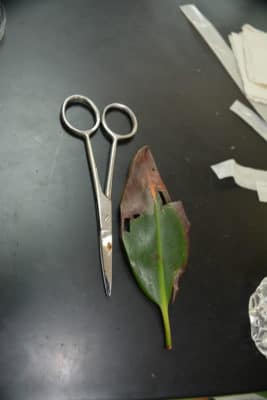Mangrove Education & Restoration Blog
Last February, I presented about the B.A.M. program at the Bahamas Natural History Conference, a conference in the Bahamas that offers presentations about the science and education programs being implemented by various organizations that are working throughout the Bahamas. It is a great place to learn about the work that others are doing as well as make connections with other organizations.
This is where I met Ryann Rossi, a PhD candidate at North Carolina State University (NCSU) Department of Applied Ecology. For months, I had heard our partners at FRIENDS of the Environment (FRIENDS) talk about the interesting mangrove disease work that Ryann was conducting in Abaco, Bahamas and other Bahamian islands. As the story goes, her research resulted from bone fisherman discovering a large area of red mangrove trees dying off while fishing on the western side of Abaco Island called the Marls. They called attention to the issue and notified FRIENDS of the Environment. Concerned FRIENDS contacted NCSU and that is when Ryann came on scene.
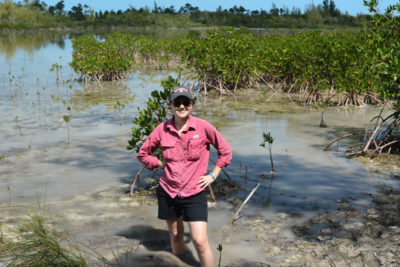
Ryann Rossi, PhD Candidate North Carolina State University.
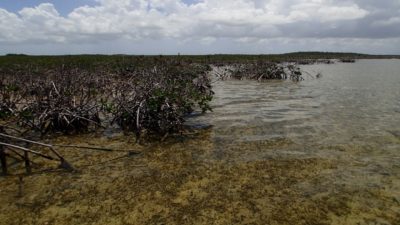
Red mangrove die-off in the Marls, which is located on Abaco, The Bahamas. Photos provided by Ryann Rossi.
I was really excited to talk to Ryann about the die off and I had lot of questions for her. I wanted to know what was causing the die off. Did she think it was due to humans? How fast was the die off happening? During Ryann’s presentation at the conference, I quickly realized that her initial research showed that the mangrove die off was probably due to a combination of stressors. The mangroves were probably first stressed by damage caused during a hurricane. Then a fungal disease and grazing by the Robust Bush Cricket (Tafalisca eluthera) likely continued to cause the mangroves to deteriorate. I found her research to be fascinating and extremely important considering that the disease could spread or it could be present in other places throughout the Caribbean.
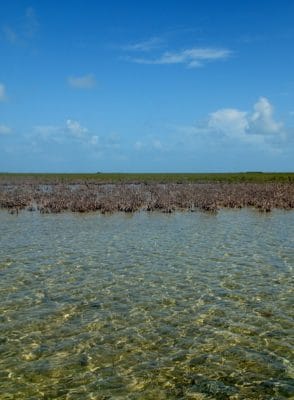
Notice the red mangrove die-off extends from these mangroves in the foreground all the way to other grove of mangroves behind it.
One of the other components to Ryann’s research that I was thrilled to hear about was that she collected mangrove leaves with lesions on them using citizen scientists. The citizen scientists collected leaves using a scientific protocol organized by Ryann and her collaborators, provided the samples to FRIENDS for safe keeping, and submitted the data online at Abaco Scientist.
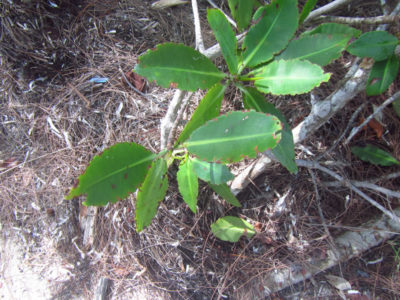
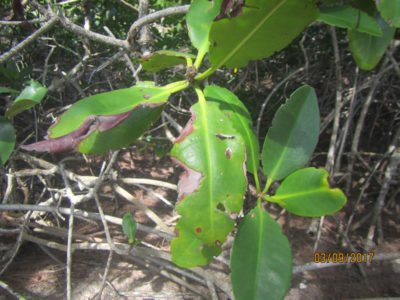
Diseased leaves exhibit brown lesions on them. Photos by Ryann Rossi.
That is when the idea clicked in my head. We could incorporate this into the B.A.M. and J.A.M.I.N. programs! The year 2 students could collect mangrove leaves with lesions on them from their mangrove quadrats and then they could grow the leaves on an agar plate to see ifthe fungal disease was present. Not only would the students become citizen scientists and contribute to science, but they would also develop new skill sets by conducting scientific methodologies that most people do not encounter until they go to college.
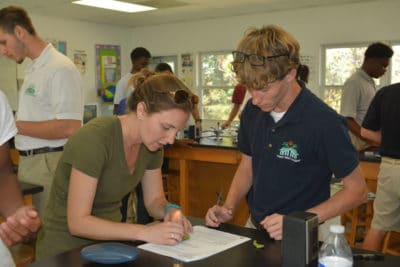
Ryann Rossi helping a student at Forest Heights Academy to plate his diseased mangrove leaf.
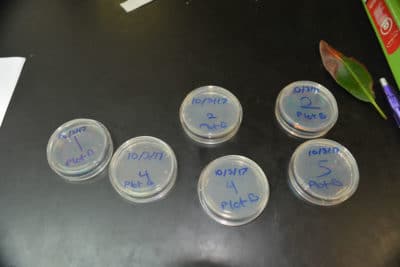
Diseased leaves growing on agar plates.
After having discussions with FRIENDS and Ryann, we decided that it would be a great addition to the program. In collaboration with Ryann, we co-developed a lesson plan that incorporates her research into our Mangrove Ecology Curriculum. As part of this phase, Ryann has joined me in the Bahamas to implement the disease lesson plan that we developed, share the most up-to-date mangrove science regarding the die-off, and give students the opportunity to work side-by-side with a mangrove scientist.
